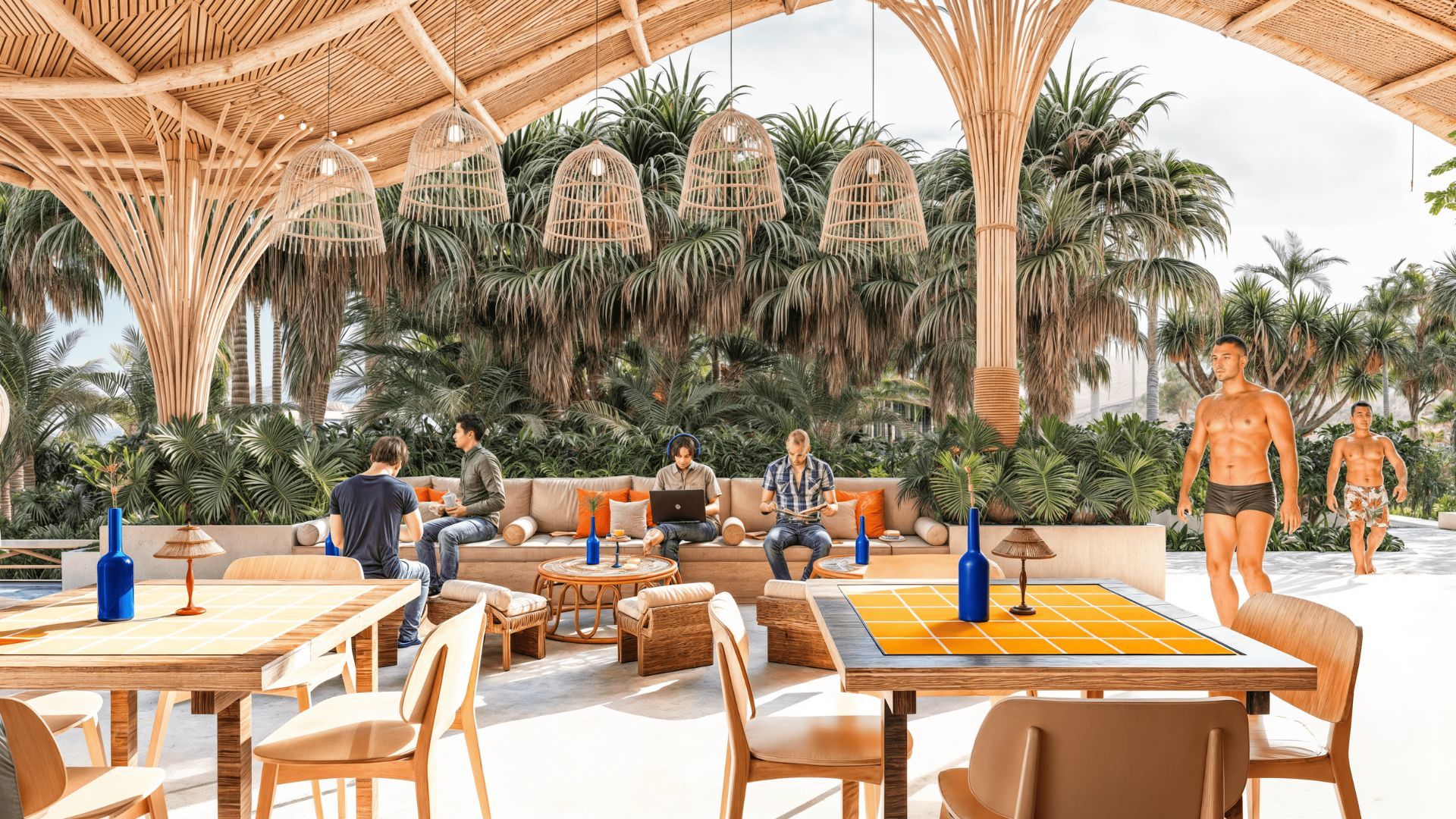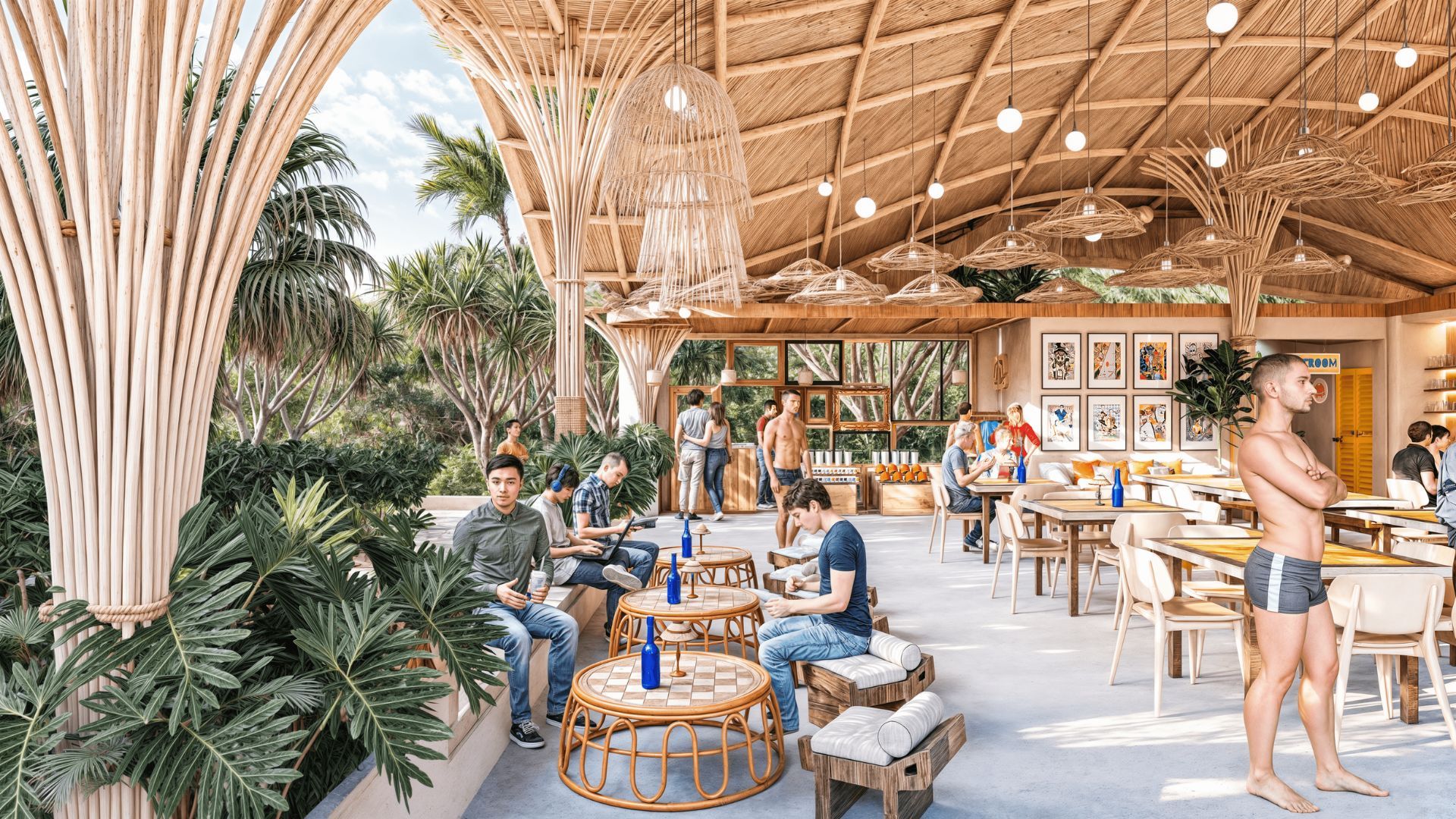Pino Perspectives: Bamboo beyond tradition, high-tech solutions for green building

Back in 2023, Pino Places was tasked to design a beach club in Siargao named Mr. Turtle with both sustainability and local materials in mind while being durable enough to withstand the regular typhoons that plague the island. By embracing eco-friendly materials and innovative design principles, the owners wanted the beach club to become a sanctuary where visitors can immerse themselves in the beauty of the island while minimizing their ecological footprint. Choosing the right materials was crucial to achieving this vision.

The first sustainable material that came to my mind was bamboo. As a rapidly renewable resource, bamboo is abundant to the Philippines and has an exceptional ability to sequester carbon, absorbing up to five times more CO2 than trees while releasing 35 percent more oxygen. Some species can grow up to three feet per day, making it one of the fastest-growing plants on Earth. However, despite its many advantages, using bamboo in large-scale architecture presents challenges. It requires skilled craftsmanship, has high flammability, and is prone to moisture absorption, leading to rot and mold. Additionally, untreated bamboo is susceptible to pest infestations, which can compromise its structural integrity.

As luck would have it, just as we were kicking off the Mr. Turtle project, I encountered Rizome, a company that had recently set up a factory in the Philippines to produce high-performance bamboo construction materials. Rizome specializes in processing Dendrocalamus asper, a giant bamboo species native to Southeast Asia, turning it into fire-resistant, moisture-proof, and highly durable construction materials. Their advanced treatment process eliminates the weaknesses typically associated with bamboo, addressing all the concerns I had previously encountered.

Rizome produces a variety of engineered bamboo products, including boards, veneers, panels, and structural lumber. For Mr. Turtle, we chose laminated veneer lumber (LVL), a material known for its high tensile and bending strength, making it an ideal substitute for traditional materials. Its strength-to-weight ratio rivals both steel and reinforced concrete, offering structural stability while allowing for architectural flexibility. This flexibility enabled us to design an organic, flowing roof structure, which became the defining feature of Mr. Turtle Beach Club.

Beyond its structural benefits, bamboo offers significant environmental advantages. Compared to conventional building materials like concrete and steel, bamboo has a much lower carbon footprint. Harvesting bamboo does not require replanting, as the plant regenerates naturally, preventing deforestation and improving soil health. Additionally, engineered bamboo reduces construction waste, as it is pre-fabricated to precise dimensions, minimizing excess material disposal. Furthermore, unlike synthetic materials, bamboo is biodegradable, ensuring minimal long-term environmental impact.

Despite these advantages, bamboo remains underutilized in mainstream architecture. One of the biggest hurdles is perception—it has long been associated with low-cost, temporary structures rather than high-end, durable architecture. Additionally, building codes and regulations in many countries, including the Philippines, have not yet fully integrated engineered bamboo as a standard construction material. However, as innovative projects demonstrate its potential, the stigma surrounding bamboo is gradually fading.

When completed, Mr. Turtle will not only be one of the largest beach clubs in Siargao but also one of the first buildings in the Philippines to use laminated bamboo as a primary structural element. More than just a hospitality project, it represents a new frontier for sustainable architecture in the country. With an anticipated opening in the third quarter of 2025, we hope Mr. Turtle will inspire more architects, developers, and policymakers to consider bamboo as a viable and scalable building material.

As the world moves toward reducing carbon emissions and adopting eco-friendly construction practices, engineered bamboo presents a promising alternative. It is strong, renewable, and environmentally responsible—a material well-suited for the future of architecture. Perhaps it is time to see bamboo not just as a traditional resource, but as a key solution to building a more sustainable world.
